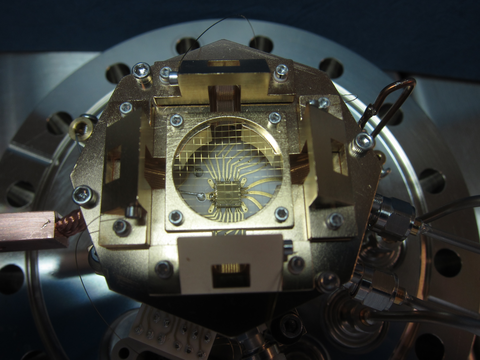
Look Ma, (almost) no lasers! NIST researchers and collaborators found a potential new way to make more powerful quantum computers based on ions (charged atoms), a leading technology for information-carrying quantum bits, or qubits.
Usually, researchers need high-power custom lasers to control these qubits. Instead, the NIST team entangled (linked the properties of) ion pairs just as effectively — getting it right about 999 times out of 1,000, tying the records across all quantum technology — using radio and microwave technology developed for wireless communications.
Until now, entangling ions without lasers was less accurate and a lot slower than laser methods. The new method matches the best laser methods for accuracy and approaches their speed at 740 microseconds. It’s technically simpler than using lasers and promises to make it possible to do many entangling operations simultaneously on many pairs of ions, something that is more challenging for lasers.
Disclaimer: Some lasers were involved in the making of this achievement. The researchers tested out the new scheme by entangling two magnesium ions using a sequence of simultaneous radiofrequency and microwave magnetic fields. Low-power laser pulses were still used for noncontrol tasks like cooling the ions.
Collaborators include: University of Colorado, Lawrence Livermore National Laboratory, The University of Texas at San Antonio and University of Oregon.
Get the full details in the journal article published in Nature.
Follow us on social media for more like this from all across NIST!

